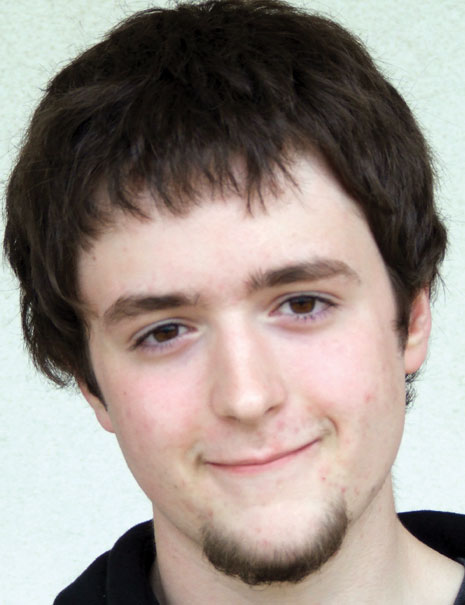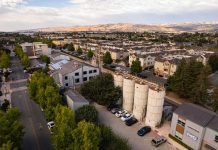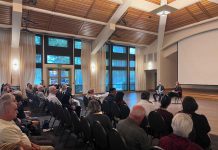The Governator’s (December) decision to slash about $2.5 billion
dollars from the school budget is enough to send anyone in the
education industry into a bit of a frenzy; with a global recession
looming over every movement we make, it doesn’t seem like that
money’s going to be reintroduced anytime soon.
By Burt Sickler
The Governator’s (December) decision to slash about $2.5 billion dollars from the school budget is enough to send anyone in the education industry into a bit of a frenzy; with a global recession looming over every movement we make, it doesn’t seem like that money’s going to be reintroduced anytime soon. The state is set for what will undoubtedly be one of the most difficult times in our school district’s existence, and decisions (for better or worse) have to be made.
In a state filled with competing schools and students, Sobrato High School must constantly find ways to push the bar higher, and raise themselves above all others, but with dwindling funding it is difficult to accomplish this. What Sobrato really needs is a program that would not only benefit the school’s reputation but bring in money as well, and of course give the students a useful education. After undoubtedly many nights of hard thought and careful planning, five teachers drew up blueprints for an idea that would not only bring attention to the school, but also possibly aid in balancing the school’s budget. Before this idea could be enacted, the teachers would need to prove the program’s worth with a test run.
The 2007-2008 Festival of the Arts was proclaimed a success by visual communications teacher, Mr. Gary Harmon. The completely student-run event brought in celebrities, allowed the students to learn organizational skills, and brought in event-goers’ money. Sadly not all those present agreed with Mr. Harmon on the success of the event. Web sites such as www.morganhillreview.com question whether the $135 attendees spent was worth it to sit in a folding chair in the cold and uncomfortable wind for two hours. The five art teachers used the success of the event to convince the school board to allow them to begin the real plan.
The ARTTEC program combines multiple professional level classes under one name, giving the organization a greater power to allow its students to push further into the fields of artistic learning. By allowing students to focus their courses on a more “artistic” curriculum, they would theoretically be better prepared for their post-graduation lives.
Many students describe this artistic curriculum as being a “waste of time.” The program spends a large majority of the students’ time on collaborative projects that benefit all of ARTTEC, aimed at providing the school with money and attention. A commendable idea, but when class time has become replaced with hard physical labor, such as “dragging wood back and forth along the stage” says senior Eric Verbeck-Medina, as well as repetitively stacking heavy pieces of lumber, the new classes seem to lose some of their glow. As with any new program, ARTTEC director Mr. Harmon said the classes are “evolving.”
ARTTEC has also enacted a revolutionary new idea within its program that gives students a social ranking. Each student is given a number, and challenged to climb the ranks of this “social ladder” so as to gain more power within the program. Through this social system, students are given power over others and are even given the responsibility of directing the classes and events themselves. While Mr. Harmon says this was an attempt to recreate a business model in the school, and was meant to inspire the students to work closer together, it seems nightmarish to imagine if the entire school’s population were assigned a number and rank, and were then told to compete for favor.
This self-sufficient program has been anything but. With Festival of the Arts falling short of their expected income, the ARTTEC program entered the new year with a deficit. Struggling for money, the teachers looked outside of their “allowances,” talking to the school board and applying for grants. Despite the program’s struggles for money, the program remains in debt.
The ARTTEC directors dreamed of creating a program that would allow students to master skills that were not available during their own youth, and gain hands-on experience that would benefit them for the rest of their lives. They had hoped that with enough pressure, over enough time, students would mold into the roles of a workplace and become the responsible producers of an amazing program, which could help bring fame to the 2008-2009 legacy. The pressure, though, isn’t simply on the students.
All of Sobrato will be held responsible for this program, and with no response to a grant until February, ARTTEC is operating purely on donations and school funds, both of which will start to become more and more difficult to attain. Perhaps, after the loss of more than half of its members, it’s time to look at the program as a whole. The school knew there would be risks, just as there always are with a new idea, but when students’ grades, time, money and energy are spent in such a way, is the risk worth it?
Burt Sickler penned this column that originally ran in the December Sobrato Watchdog, the Ann Sobrato High School student paper. Go to www.thesobratowatchdog.tk








